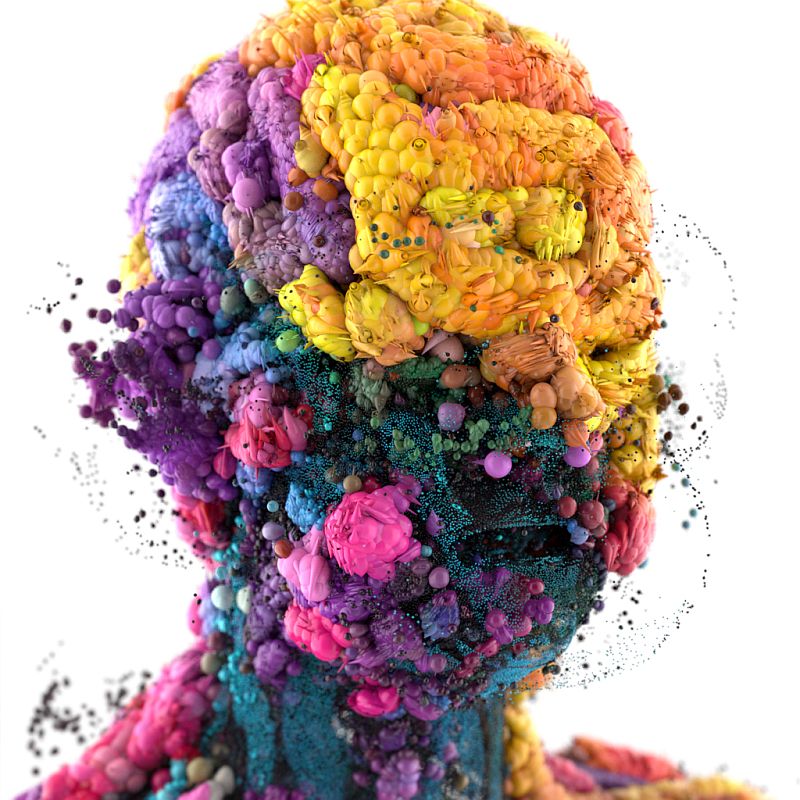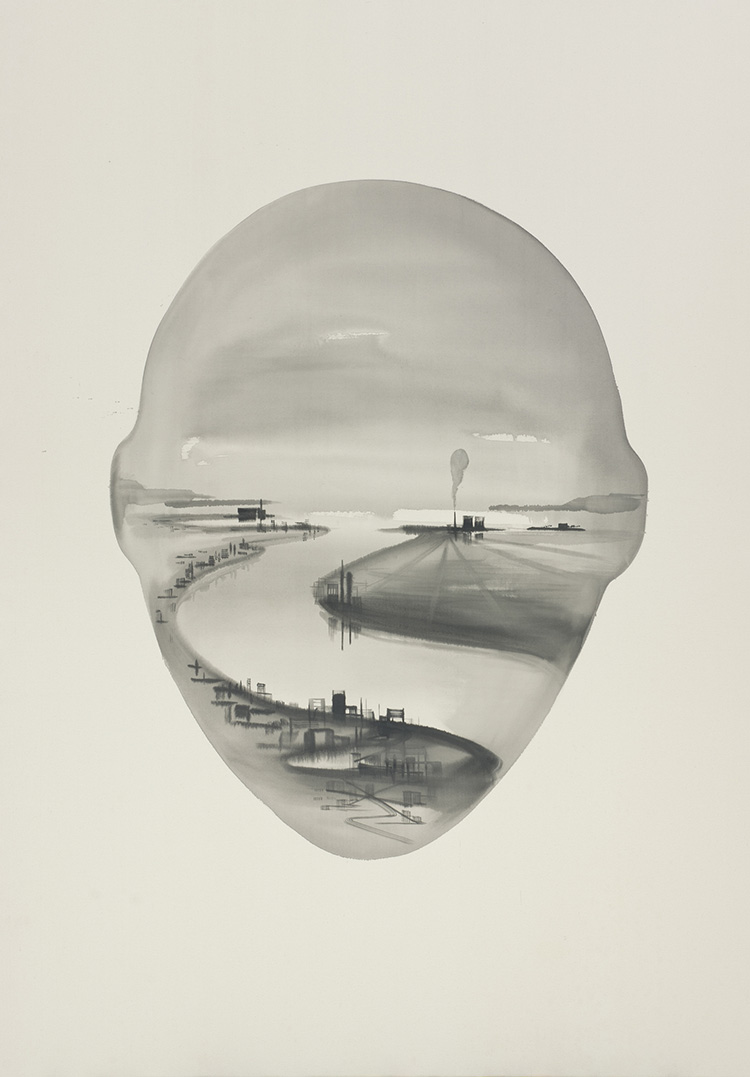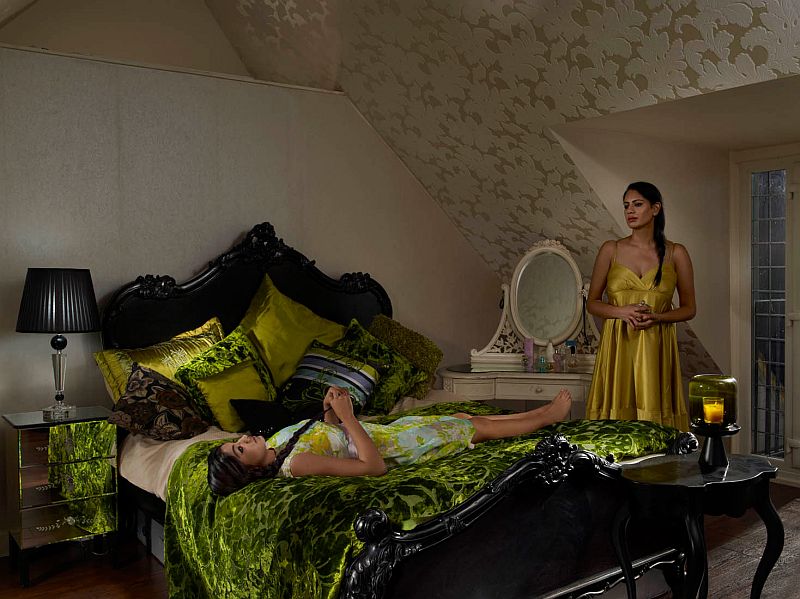Con exquisita delicadeza e infinita paciencia, Edouard Martinet confecciona, sin soldaduras, animales con restos de mecánica y carrocería, y diversos objetos recuperados en mercadillos y desguaces. Un trabajo minucioso, preciosista y de un notable buen gusto.
With exquisite delicacy and infinite patience, Edouard Martinet manufactures, without welding, animals with scrap of mechanical and bodywork, and several stuff recovered in markets and scrapyards. A thorough work, precious and with a very good taste.
____________________________________________________________
Edouard Martinet
Edouard Martinet nació en Le Mans, Francia, en 1963. Estudió arte en la ESAG, París, y se graduó en 1988.
Entre 1988 y 1992 vivió y trabajó en París como diseñador gráfico, y en 1990 comenzó a esculpir y presentar exposiciones. Entre 1992 y 1995 vivió en Charente, antes de desplazarse a su actual residencia en Rennes, donde enseña en el Instituto de Artes Aplicadas.
"Saltamontes / Grasshopper"
Alas: cubrecadenas de ciclomotor / Alas Wings: Moped chain guards
Abdomen: guardabarros de bicicleta, guardabarros Dolex y juguetes viejos / bike fender, dolex fender and old toys
Patas traseras: frenos de bicicleta / Rear legs: bike forks - Patas delanteras: frenos de bicicleta / Forelegs: bike brakes
Extremos de las patas: tapones para paredes de yeso / Ends of legs: plugs for plaster walls
Tórax y Cabeza: piezas de coches y bicicletas / Thorax and head: pieces of cars and bikes - Antenas: radios de bicicleta / Antennae: bike spokes
"Espinocho / Three-spined stickleback", 86 x 13 x 34 cm.
Cuerpo: defensas de ciclomotores y cubrecadenas / Body: moped fenders and chain guards
Huesos: cucharas / Bones: tablespoons - Branquias: piezas de puerta de coche / Gills: car door parts
Aletas: moldes de pastelería, rodajas de pescado, brújulas / Fins: cake tins, fish slices, compasses
Cola: silenciador de moto, rodajas de pescado / Tail: motorbike silencer, fish slices
Ojos: linternas / Eyes: flashlights - Cabeza: guardabarros delanteros Solex / Head: Solex front fenders
"Sapo 2 / Toad 2", 12 x 20 x 22 cm.
Cuerpo: Dos grandes faros de coches viejos / Body: Two big headlights taken from old cars
Patas: Frenos, luces traseras y mangos de espejo de coche / Legs: Brakes, rear lights and car mirror handles
Boca: Cucharón / Mouth: Ladle - Ojos: Luces de coche / Eyes: Car lights
"Mariposa / Moth", 78 x 42 x 17 cm.
Alas: cubrecadenas de ciclomotor (oxidadas y patinadas) / Wings : moped chain guards (rusted and patinated)
Abdomen: faros de moto / motorbike headlights - Tórax: faros de coche muy viejo / Thorax: very old car headlamp
Patas: grandes clavos de tapicería, bisagras de cargador de coche, piezas de limpiaparabrisas, partes de frenos de bicicleta, cubrecadenas /
Legs: large upholstery tacks, car boot hinges, pieces of windshield wipers, bike brake parts, chain guards
Cabeza: luces de posición traseras viejas, piezas de bicicleta, piezas de una rueda de margarita /
Head: old rear position lamps, bike parts, pieces of a daisy wheel
Tronco de la mariposa: muelles de reloj / Butterfly trunk: clock springs - Antenas: resistencia de aluminio / Antennae: aluminium heating resistor
"Gamba de la bahía de Dublín / Dublin Bay Prawn"
Tórax y cabeza: adorno de coche, viejas cubiertas de alerones de coche (aluminio) / Thorax and head: car mascot, old car wing covers (aluminium)
Antenas: cables de freno de bicicleta / Antennae: bike brake cables - Abdomen: guardabarros Solex, horquillas para el cabello / Solex fender, hair pins
Cola: ventiladores eléctricos / Tail: electrical fans - Patas: frenos de bicicleta y tenedores de caracol / Legs: bike brakes and snail forks
Garras: tijeras de aves de corral, cubiertas cromadas en tanques de ciclomotores de los '50, rebanadoras /
Claws: poultry scissors, chromium-plated covers on 50’s moped tanks, slicers
Ojos: mangos de Peugeot de los '40 / Eyes: inside handles of 40s Peugeot
Cuando Edouard Martinet tenía 10 años, uno de sus profesores introdujo a sus alumnos en el mundo de los insectos, pero de manera obsesiva. Subliminalmente, la fascinación caló en el joven francés. Pasaron 40 años, y Martinet se ha convertido en el más virtuoso insectófilo del mundo del arte, transformando partes y piezas de descarte recuperadas de mercados de pulgas y desguaces de automóviles en insectos exquisitamente ejecutados, peces y otros animales. Lo que diferencia la obra de Martinet es la brillante claridad formal de sus esculturas, y su extraordinaria elegancia de articulación. Su grado de virtuosismo es único: no suelda las partes. Sus esculturas están atornilladas. Esto da a sus formas un nivel extra de riqueza visual, pero no de modo que meramente transmita la seca precisión de, digamos, un relojero. Hay un factor extra aquí, una ingeniosa gracia, una re-imaginación de lo obvio en la cual un objeto hermosamente acabado brilla, no con perfección, sino con carácter, con una nueva vida. A Martinet le lleva casi un mes hacer una escultura, y a menudo trabaja en dos o tres piezas a la vez.
![]()
"Mantis religiosa / Praying Mantis", 90 x 90 x 43 cm.
Alas: faros traseros de un Peugeot 404 / Wings: Rear lights of a Peugeot 404
Tórax: parachoques de coche de 1950 / Thorax: 1950's car bumper - Cabeza: Dos indicadores / Head: Two indicators
Miembros anteriores: prensas de ajo y deshuesadoras de oliva / Top Forelegs: Garlic presses and olive pitters
Abdomen: guardabarros de bicicletas y el ventilador del coche / Bike fender and car ventilator
Patas: Partes de limpiaparabrisas y tapones utilizados para paredes de yeso / Legs: Pieces of windshield wipers and plugs used for plaster walls
"Mariposa / Butterfly", 63 x 36 x 57 cm.
Alas: guardacadenas de ciclomotor / Wings: moped chain guards
Patas: partes de frenos de bicicletas, piezas de limpiaparabrisas, cadenas de bicicleta / Legs: bike brake parts, pieces of winshield wipers, bike chains
Abdomen: viejo tanque de acetileno ligero / old acetylene light tank
Tórax: pieza de la suspensión del coche, piezas pequeñas de cuchara, cargadores de crema / Thorax: car suspension part, small spoon parts, cream chargers
Cabeza: faros, partes de bicicleta / Head: headlights, bike parts - Tronco de la mariposa: muelles de reloj / Butterfly trunk: clock springs
Pelos: piezas de una rueda de margarita / Hair: pieces of a daisy wheel
Antenas: cables de freno, arriba perillas de cajón / Antennae: brake cables, on the top: drawer knobs
Izq./ Left: "Escarabajo tortuga / Tortoise Beetle"
Caparazón: filtro de latón/bronce de piscina pintada en azul y oxidado /
Shell: swimming pool bronze/brass filter painted in blue and oxidised
Bajo: guardabarros Solex / Under: Solex fender - Tórax: luz trasera del coche / Thorax: rear car light
Cabeza: bici piece La lámpara de acetileno / Head: bike acetylene lamp piece - Ojos: reflectores del tractor / Eyes: tractor reflectors
Antenas: cadenas de bicicletas, partes cascanueces / Antennae: bike chains, nutcracker parts
Patas: partes de frenos de bicicleta, cubrecables de bicicletas / Legs: bike brake parts, bike cable guards
Centro / Center: "Longicornio rojo / Red Longicorn Insect"
Cuerpo: casco del barco de juguete de los '50 / Body: hull of a 50’s toy boat
Tórax: juguete de la cabina de una locomotora de los '50 / Thorax: a 50’s toy locomotive cab
Ojos: grandes tachuelas de tapicería / Eyes: big upholstry tacks - Garras: alicates / Claws: pliers - Antenas: brújulas / Antennae: compasses
Patas: compases, herramientas para rellenar cartuchos de escopetas, cadenas de bicicleta, horquillas caracol /
Legs: compasses, tools to fill cartridges of shotguns, bike chains, snail forks
"Gorgojo / Weevil"
Cuerpo: pantalla de la lámpara de luz de una máquina de coser / Body: lamp shade for a lamp used on a sewing machine
Tórax: faros moto / Thorax: bike headlight
Ojos: ojales de metal de una cubierta de lona, malla de alambre / Eyes: metal eyelets off a canvas cover, wire mesh
Cabeza, Nariz: lata de aceite / Head, Nose: oil can
Antenas: cadenas de bicicletas, partes de cascanueces / Antennae: bike chains, nutcracker parts
Bajo el cuerpo: faro de coche / Under the boy: car light
Patas: manijas de coche, limpiaparabrisas, guardacadena de la bici, tuercas de mariposa, tenedores de marisco /
Legs: handles of a car, windscreen wipers, bike chain guards, wing nuts, seafood forks
"Hormiga roja / Red Ant", 65 x 42 x 22 cm.
Tórax y cabeza: cucharas de salsa, partes de coche / Thorax and head: sauce spoons, car parts
Ojos: mármoles / Eyes: marbles - Abdomen: faros de bicicleta o moto / bike or motorbike headlights
Antenas: pequeñas cadenas de bicicleta / Antennae: small bike chains
Patas: cargadores de crema, partes de frenos, cadenas, pies de reloj despertador, mangos de cuchara /
Legs: cream chargers, brake parts, chains, alarm clock feet, spoon handles
"Cuando encuentro un objeto, no siempre veo un uso para él, pero generalmente lo cojo y lo dejo para más adelante. Aunque a veces encuentro algo y veo su potencial instantáneamente. Ocasionalmente, un objeto puede darme una idea para hacer un insecto en particular. Pero puede ser un largo proceso obtener todas las partes, porque no sólo es necesario que todas las partes encajen bien; es necesario que representen fielmente la parte de la escultura que están destinadas a ser. Y no es raro comenzar algo y tener que dejarlo de lado hasta que encuentro la pieza adecuada para completarlo. Una vez me llevó 15 años hacer una libélula."
"Peces / Fishes"
El lugar de trabajo de Edouart / Edouard's workplace
"Toad / Rana", 25 x 33 x 19 cm.
Ojos: pequeños faros de bicicleta / Eyes: small bike headlights - Cuerpo: frasco de aluminio / Body: aluminium flask
Boca: parte de un bolso, parte de un carburador / Mouth: part of a purse, part of a carburettor
Parte superior de la cabeza: guardabarros Solex / On the top of the head: Solex fender
Patas traseras: topes de paragolpes de coche / Rear Legs: car bumper stops
Patas delanteras: dos faros, parte de una trompeta / Fore Legs: two headlights, part of a trumpet - Dedos: azada de jardinería / Fingers: gardening hoe
Edouard Martinet was born in Le Mans, France in 1963 he studied art at ESAG, Paris and graduated in 1988.
From 1988 to 1992 he lived and worked in Paris as a graphic designer, and in 1990 started sculpting and staging exhibitions. From 1992 to 1995 he lived in Charente before moving to his current location in Rennes where he teaches art at L'Institut des Arts Appliques
"Escarabajo rinoceronte / Rhinoceros beetle", 33 x 28 cm, alto / height: 15 cm
Patas: partes de frenos de bicicleta, desviador de cadena de bicicleta, anillo de la cadena de la bicicleta /
Legs: bike brake parts, bike derailleur chain, bike chain ring
Cabeza y cuerno: pequeño freno de bicicleta, piesas de una rueda dentada / Head and horn: small bike brake, pieces of a daisy wheel
Antenas: pequeñas partes de bicicleta / Antennae: small bike parts - Tórax: horma, faro de bicicleta Luxor / Thorax: shoe tree, bike Luxor headlight
Abdomen: luz de motocicleta, las manijas del cajón en forma de concha / motorbike light, shell-shaped drawer handles
"Avispa / Wasp", 28 x 16 x 40 cm.,
(Vidrio / Glass only: 21 cm diam. x 49 cm. alto / high) (Total: 23 x 33 x 78 cm.)
Abdomen: puntas de acero para botas, faros de bicicleta / steel tips for boots, bike headlights
Tórax y cabeza: piezas de acero y campanas de bicicletas y máquinas de escribir / Thorax and head : steel tips and bells from bikes and typewriters
Ojos: caja de reloj antigua / Eyes: vintage watch case - Antenas: patillas de anteojos / Antennae: spectacles arms
Patas: frenos de bicicleta, cadena de bicicleta, mangos de cuchara / Legs: bike brakes , bike chain , spoon handles
Alas: vidrio / Wings: glass
"Libélula / Dragonfly", 95 x 125 x 38 cm.
Abdomen: bomba de bicicleta patinada de cobre/latón, parte de la bocina de un coche, viejas piezas de luces de acetileno para bicicletas (en los extremos) /
Abdomen: patinated copper/brass bicycle pump, car horn part, parts of old acetylene bike lights ( at the ends)
Tórax: dos luces traseras de motos, manijas de cajón en forma de concha, grandes tachuelas de tapicería /
Thorax : two motorbike rear lights, shell-shaped drawer handles, big upholstery tacks
Cabeza: luces de freno de automóviles o camiones viejos, piezas de luces de acetileno de bicicleta, partes de una rueda de margarita de máquina de escribir (el pelo de la boca) /
Head: car or lorry old stop lights, parts of acetylene bike lights, parts of a daisy wheel for typewriter (hair from the mouth)
Patas: tubos, cable de guía de bicicletas, tuercas de mariposa, alambre /
Legs: tubes, bike cable guide, wing nuts, wire
Alas: Costillas de paraguas, alambre, malla de alambre para gallineros /
Wings: umbrella ribs, wire, wire netting for hen coops
"Libélula / Dragonfly" (detalle / detail)
"Escarabajo Dorcus macho / Dorcus beetle (stag beetle)", 46 x 34 cm., altura / high: 21 cm.
Cabeza: montura de gafas de metal, luces traseras de coche, partes gafas / Head: metal glasses box , rear car lights , glasses parts
Ojos: piezas de luces de bicicletas / Eyes: bike light parts - Garras: alicates universales / Claws: universal pliers
Antenas: retractores quirúrgicos / Antennae: surgical retractors
Tórax: metal y caja de cuero de gafas, luces del coche traseras / Thorax: metal and leather glasses box, rear car lights
Abdomen: mango de tracción de arranque de Citroen / Citroen Traction boot handle
Bajo el abdomen: manijas de cajones en forma de concha, guardabarros delantero Solex / Under the abdomen: shell-shaped drawer handles, Solex front fender
Patas delanteras: horquillas caracol, cadena de bicicleta, partes de frenos, limpiaparabrisas /
Legs: snail forks, bike chain, brake parts, windscreen wipers
When Edouard Martinet was 10, one of his teachers introduced his pupils to insects, but in a rather obsessive way. Subliminally, the fascination sunk in to the young French boy. Fast-forward 40 years, and Martinet has become the art world's virtuoso insectophile, transforming bits and pieces of cast-off junk culled from flea markets and car boot sales into exquisitely executed insect, fish and animal forms. What sets Martinet's work apart is the brilliant formal clarity of his sculptures, and their extraordinary elegance of articulation. His degree of virtuosity is unique: he does not solder or weld parts. His sculptures are screwed together. This gives his forms an extra level of visual richness - but not in a way that merely conveys the dry precision of, say, a watchmaker. There is an X-Factor here, a graceful wit, a re-imagining of the obvious in which a beautifully finished object glows not with perfection, but with character, with new life. Martinet takes about a month to make a sculpture and will often work on two or three pieces at the same time.
![]()
"Libélula / Dragon Fly", 33 x 110 x 70 cm.
Ojos: faros para bicicletas viejas, malla de alambre en el interior, trozos de antiguas de faros de principios del siglo 20 /
Eyes: old bike headlights, wire mesh inside, old bits of headlights dated back from the early 20th century
Patas: tubos, guía de cable de bicicletas, tuercas de mariposa / Legs: tubes, bike cable guide, wing nuts
Cuerpo: luces de alerón de coche, luces traseras de bicicletas / Body: car wing lights, bike rear lights
Alas: alambre de púas, varillas de paraguas / Wings: fencing wire, umbrella ribs
Abdomen: bomba de bicicleta de latón/cobre patinada, bomba de bicicleta de aluminio / patinated copper/brass bicycle pump, aluminium bicycle pump
"Cuervo / Raven", 63 x 30 cm., altura / high: 33 cm.
Patas: muelles secateur / Legs: secateur springs
Cuerpo y plumas: cubrecadenas de bicicleta, guardabarros de moto / Body and feather: bike chain guards, motorbike fender
Cuello: pedazo de un viejo altavoz de radio, guardabarros Solex / Neck: piece of an old radio loudspeaker, Solex fender
Cabeza: luz trasera de moto / Head: motorbike rear light
Ojos: mirillas / Eyes: spyholes - Pico: luz trasera de bicicleta / Beak (bill): bike rear lights
"Pez II / Fish II", 30 x 68 x 16 cm.
Cuerpo: guardabarros de ciclomotor y cubrecadenas / Body: Moped fenders and chain guards
Huesos: cucharas pequeñas / Bones: Small spoons - Tripas: cuernos trompeta / Guts: Trumpet horns
Ojos: Linternas / Eyes: Flashlights - Aletas: rodajas de pescado / Fins: Fish slices
"When I find an object, I don't always see a use for it, but I usually keep it and put it away for later. Yet sometimes I'll find something and see its potential instantly. Occasionally, an object will even give me an idea to make a particular insect. But it can be a very long process to get all the right parts because they not only need to fit together really well, they need to accurately represent whatever part of the sculpture it is that they are intended to be - and it's not unusual to start something and then have to put it to one side until I find just the right piece to finish it. It once took me 15 years to make a dragonfly."
Izq./ Left: "Escarabajo egipcio / Egyptian Beetle", 13 x 38 x 16 cm.
Abdomen: Faro tomado de un coche conducido durante la Segunda Guerra Mundial / Headlight taken from a car driven during the Second World War
Tórax: Faro Luxor utilizado de moto / Thorax: Luxor headlight used for a motorbike
Alas: Adorno de capó de un Citroen / Wings: Hood ornament of a Citroen
Cabeza, patas y antenas: Repuestos para bicicletas / Head, legs and antennae: Bike parts
"Mariquita / Ladybug",18 x 26 x 19 cm.
Caparazón: lámpara de aceite usado para obras viales / Shell: Oil lamp used for road works
Abdomen: faro / Headlight - Tórax: faro / Thorax: Headlight
Ojos: Linternas / Eyes: Flashlights - Garras: frenos de la bicicleta / Claws: Bike brakes
Antenas: cadenas de freno Brike / Antennae: Brike brake chains - Extremos de las patas: cadenas de bicicletas / End of legs: Bicycle chains
Más imágenes e información sobre Edouard en / More images and information about Edouard in:
Imágenes publicadas con autorización del artista (¡Muchas gracias, Edouard!)
Images published here with artist's permission (Thanks a lot, Edouard!)
![]()
Edouard habla sobre su obra /
talks about his work, Euromaxx, DW (Deutsche Welle) /
![]()












































































































































































































































































































